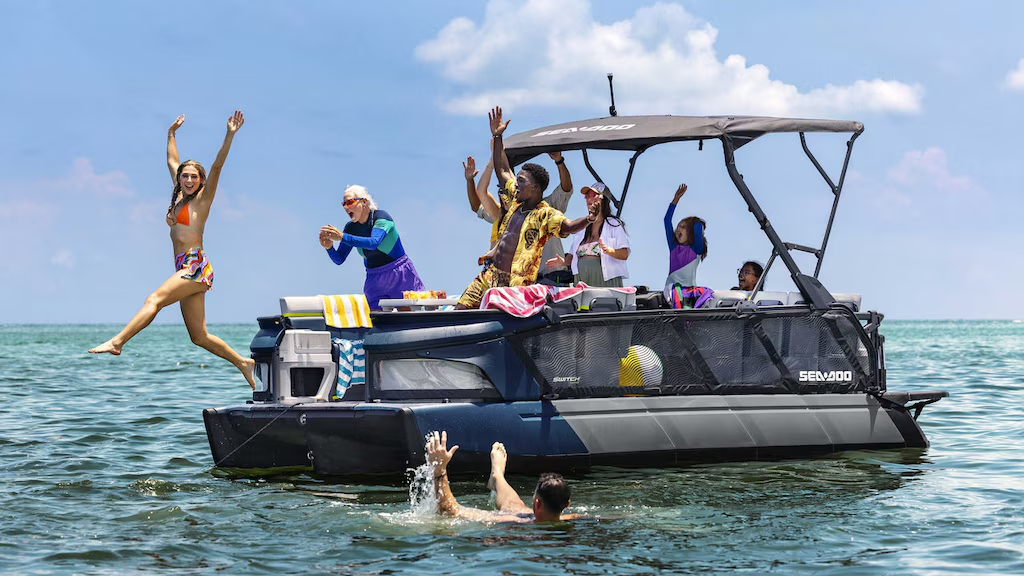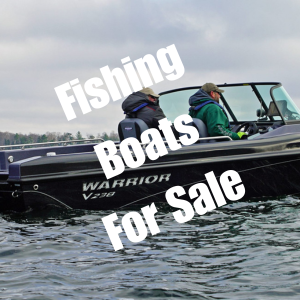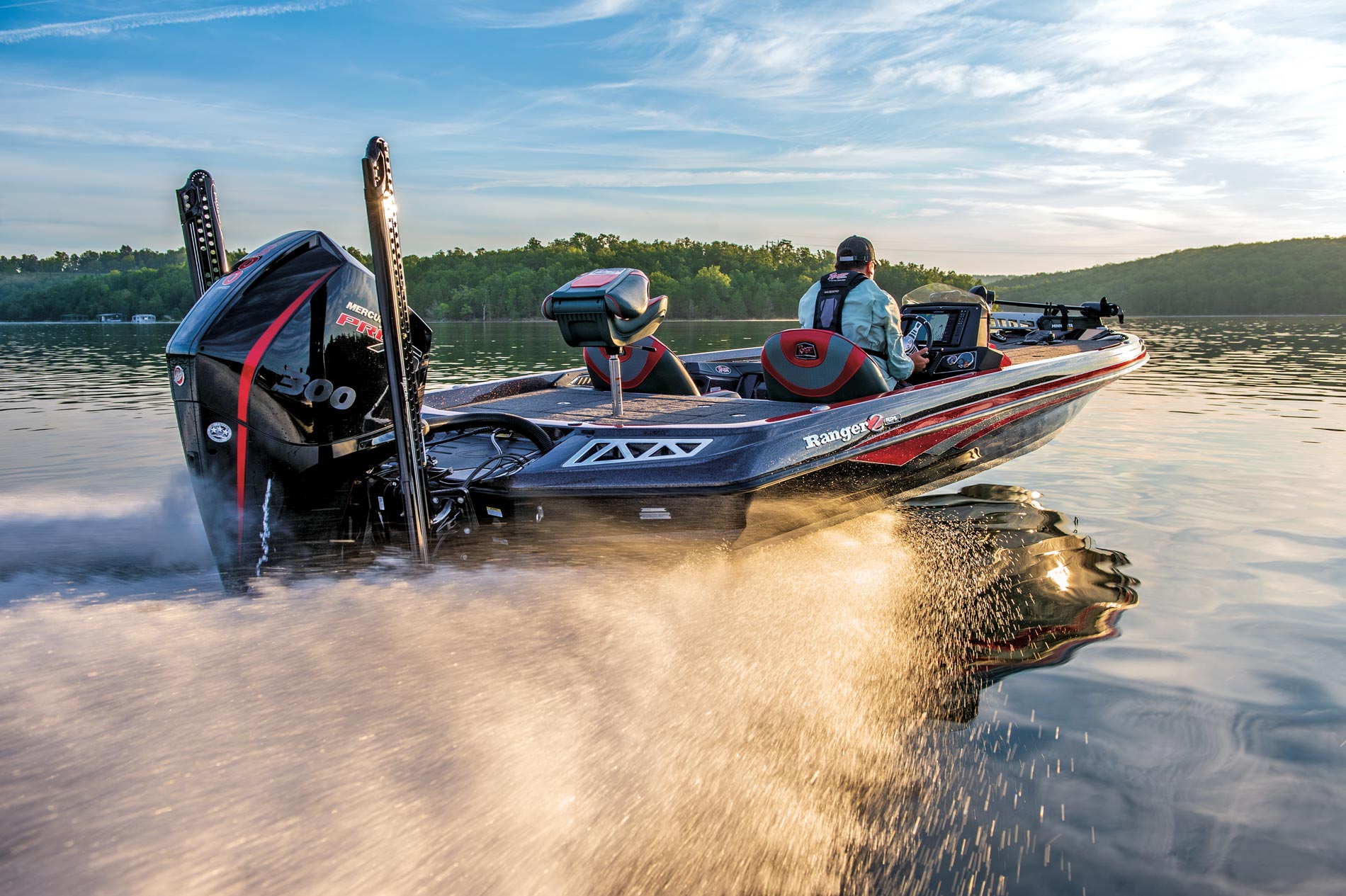Inflatable Boats
Inflatable Boats: The Ultimate Guide for Beginners
Inflatable boats have become increasingly popular in recent years due to their versatility, portability, and ease of use. These boats are made of durable materials and are designed to be inflated and deflated quickly, making them ideal for a wide range of activities, including fishing, recreational boating, and even professional use.
There are many different types of inflatable boats available on the market, each designed for a specific purpose. Some of the most common types include dinghies, kayaks, canoes, and pontoon boats. Each type of boat has its own unique features and benefits, making it important to choose the right one for your needs.
Whether you're a recreational boater or a professional fisherman, inflatable boats offer a number of advantages over traditional boats. Not only are they more affordable and easier to transport, but they also require less maintenance and are more resistant to damage. With so many different types and models to choose from, it's important to do your research and find the perfect inflatable boat for your needs.
Key Takeaways
- Inflatable boats are versatile, portable, and easy to use.
- There are many different types of inflatable boats available for different purposes.
- Inflatable boats offer advantages over traditional boats, including affordability, ease of transport, and resistance to damage.
Types of Inflatable Boats
Inflatable boats come in a variety of shapes and sizes, each with its own unique features and capabilities. Understanding the different types of inflatable boats available can help you choose the right one for your needs.
Rafts
Inflatable rafts are versatile boats that can be used for a variety of activities, including fishing, white water rafting, and leisurely floating down a river. They typically have a flat bottom and are designed to be stable in calm or rough waters. Inflatable rafts are available in a range of sizes, from small one-person boats to large rafts that can seat several people.
Kayaks
Inflatable kayaks are lightweight and portable, making them a popular choice for recreational paddlers. They are designed to be easy to maneuver and are suitable for use in calm or rough waters. Inflatable kayaks are available in both solo and tandem models, and some are even designed for use in whitewater conditions.
Rigid Inflatable Boats
Rigid inflatable boats (RIBs) are a popular choice for boaters who want the stability and performance of a traditional boat with the convenience and portability of an inflatable. RIBs have a solid hull and inflatable tubes around the sides, which provide buoyancy and stability. They are suitable for use in a variety of conditions, from calm lakes to rough seas.
Roll-Up Boats
Roll-up boats are lightweight and compact, making them easy to transport and store. They are designed to be inflated and deflated quickly, and can be used for a variety of activities, including fishing, paddling, and leisurely cruising. Roll-up boats are available in a range of sizes, from small one-person boats to larger models that can accommodate several people.
Overall, inflatable boats are a versatile and convenient option for boaters of all levels. Whether you're looking for a boat for fishing, paddling, or leisurely cruising, there is an inflatable boat that can meet your needs.
Uses of Inflatable Boats
Inflatable boats have a wide range of uses, making them a versatile and popular choice for water enthusiasts. Here are some of the most common uses for inflatable boats:
Fishing
Inflatable boats are an excellent choice for fishing. They are lightweight and easy to maneuver, making them perfect for navigating small lakes and rivers. Inflatable boats are also very stable, which is important when casting a line or reeling in a big catch. Additionally, many inflatable boats come equipped with built-in rod holders and other fishing accessories.
Tendering
Inflatable boats are commonly used as tenders for larger boats. They are easy to store and transport, and can be quickly inflated and deflated as needed. Inflatable boats are also very stable, which is important when transferring passengers or cargo between boats.
Whitewater Rafting
Inflatable boats are a popular choice for whitewater rafting. They are designed to withstand the rough conditions of fast-moving rivers and rapids, and are very stable and maneuverable. Inflatable boats used for whitewater rafting are typically larger and more durable than those used for other purposes.
Recreational Use
Inflatable boats are a great choice for recreational use. They are perfect for leisurely cruises around a lake or for exploring small streams and rivers. Inflatable boats are also a popular choice for fishing trips and other outdoor adventures.
In summary, inflatable boats are a versatile and popular choice for a wide range of water activities. Whether you are fishing, tendering, whitewater rafting, or simply enjoying a leisurely cruise, an inflatable boat is a great option.
Inflatable Boat Construction
Inflatable boats are made up of several components, including the hull, tubes, valves, and various accessories. Understanding how these components are constructed is essential to choosing the right inflatable boat for your needs. In this section, we will discuss the two main components of inflatable boat construction: hull design and high-pressure construction.
Hull Design
The hull is the bottom of the inflatable boat, and it is responsible for providing stability and buoyancy. Inflatable boats can have either a soft or hard hull. Soft-hull boats are made of PVC or Hypalon, while hard-hull boats are made of aluminum or fiberglass. The type of hull you choose will depend on your intended use of the boat.
Soft-hull boats are popular for recreational use because they are lightweight, easy to store, and affordable. They can be inflated quickly and easily, making them ideal for weekend getaways and short trips. Hard-hull boats are more durable and can handle rougher waters, making them suitable for fishing and other water sports.
High-Pressure Construction
The high-pressure construction of inflatable boats is what makes them so durable and reliable. Inflatable boats are designed to be inflated to a high pressure, which creates a rigid structure that can withstand the stresses of use. The tubes of inflatable boats are made of either PVC or Hypalon, which are both strong, flexible materials that can withstand the elements.
The high-pressure construction of inflatable boats is achieved through a combination of materials and design. The tubes of the boat are reinforced with multiple layers of fabric, which helps to distribute the pressure evenly. The valves used in inflatable boats are also designed to withstand high pressure, ensuring that the boat stays inflated even in rough waters.
In conclusion, understanding the construction of inflatable boats is essential to choosing the right boat for your needs. The hull design and high-pressure construction are two critical components that determine the durability, stability, and reliability of inflatable boats. Whether you are looking for a recreational boat or a fishing boat, understanding these components will help you make an informed decision.
Inflatable Boat Maintenance
Inflatable boats are a great investment for those who enjoy the water. To keep them in top condition, regular maintenance is essential. Proper maintenance can help extend the life of the boat, prevent damage, and ensure safe operation.
Fuel and Pump Maintenance
To keep the boat running smoothly, it is important to maintain the fuel and pump systems. Here are some tips on how to properly maintain these systems:
- Check the fuel level before each use. Make sure there is enough fuel to safely operate the boat.
- Use only the recommended fuel type for the engine.
- Regularly check the fuel lines for any cracks or leaks.
- Clean the fuel filter regularly to prevent clogs.
- Check the pump for any signs of wear or damage.
- Use a hand pump to inflate the boat to avoid over-inflation.
Storage and Care
Proper storage and care can help prevent damage to the boat and ensure it is ready for use when needed. Here are some tips on how to properly store and care for an inflatable boat:
- Rinse the boat with fresh water after each use to remove any salt or debris.
- Allow the boat to dry completely before storing it.
- Store the boat in a cool, dry place out of direct sunlight.
- Avoid storing the boat in areas with extreme temperatures or humidity.
- Do not fold the boat when storing it. Instead, roll it up loosely and store it in a bag or container.
- Inspect the boat regularly for any signs of wear or damage.
By following these maintenance tips, inflatable boat owners can enjoy their investment for years to come.
Buying Guide for Inflatable Boats
When it comes to buying an inflatable boat, there are a few things to consider, such as price, warranty, dealers, and load capacity. By keeping these factors in mind, buyers can make an informed decision and find the best inflatable boat for their needs.
Price and Budget
Inflatable boats can range in price from as little as $100 to around $2,000, depending on the style and use. Buyers should consider their budget and how they plan to use the boat before making a purchase. For example, a small, single-person canoe will be far less than a multi-person raft due to size and features. On average, buyers can expect to pay between $500 and $1,000 for a high-quality inflatable boat that can comfortably fit 6 people.
Warranty and Dealers
Buyers should also consider the warranty and dealers when purchasing an inflatable boat. A good warranty will provide peace of mind and protect the buyer in case of defects or issues with the boat. It is also important to choose a reputable dealer that offers excellent customer service and support. Some of the best inflatable boat brands with great warranties and dealers include Medline 9, Zodiac, and Sea Eagle.
Load Capacity
Load capacity is another important factor to consider when buying an inflatable boat. Buyers should choose a boat with a load capacity that can comfortably accommodate the number of people and gear they plan to bring on board. It is important to note that overloading an inflatable boat can be dangerous and may cause the boat to capsize. Buyers should also consider the weight of the motor and any additional equipment when calculating the load capacity.
In conclusion, when buying an inflatable boat, buyers should consider their budget, warranty, dealers, and load capacity. By keeping these factors in mind and doing research, buyers can find the best inflatable boat for their needs and enjoy a safe and fun boating experience.
Accessories and Extras
In addition to the inflatable boat itself, there are several accessories and extras that can enhance the boating experience. This section will cover two main categories of accessories: Trailers and Transport and Outboard Accessories.
Trailers and Transport
Transporting an inflatable boat can be a challenge, but with the right trailer and accessories, it can be made much easier. There are several trailer options available, including custom-made trailers and universal trailers that can be adjusted to fit various boat sizes.
Some of the most popular trailer accessories include:
- Trailer hitch locks
- Spare tires
- Tie-down straps
- Trailer jacks
- Trailer lights
Before purchasing a trailer, it is important to ensure that it is compatible with the boat and that it meets all safety requirements.
Outboard Accessories
Outboard motors are a popular choice for powering inflatable boats, and there are several accessories that can make using an outboard motor even easier. Some popular outboard accessories include:
- Fuel tanks and lines
- Propellers
- Motor mounts
- Trolling motors
- Steering systems
It is important to ensure that any outboard accessories are compatible with the motor and the boat before making a purchase.
Overall, accessories and extras can greatly enhance the boating experience for inflatable boat owners. From trailers and transport to outboard accessories, there are many options available to make boating more convenient and enjoyable.
Professional Use of Inflatable Boats
Inflatable boats are not just for recreational use. They are also widely used in professional settings due to their versatility, durability, and portability. In this section, we will explore the various ways inflatable boats are used for professional purposes.
Professional Events
Inflatable boats are often used in professional events such as water sports competitions, fishing tournaments, and rescue missions. Due to their lightweight and compact design, inflatable boats are easy to transport and set up, making them ideal for events that require quick and efficient deployment.
Inflatable boats are also popular among professional divers and snorkelers. They can be used to transport equipment and personnel to and from dive sites, as well as to provide support during underwater operations.
Commercial Use
Inflatable boats are commonly used in commercial settings such as fishing, oil and gas exploration, and transportation. They are ideal for use in shallow waters, where traditional boats may not be able to operate.
In the fishing industry, inflatable boats are used for netting, trawling, and longlining. They are also used for fish farming and aquaculture, where they can be used to transport fish between tanks or to harvest fish from pens.
In the oil and gas industry, inflatable boats are used for offshore exploration, drilling, and maintenance. They can be used to transport personnel and equipment to and from rigs, as well as to provide support during underwater operations.
In conclusion, inflatable boats are versatile and durable vessels that are widely used in professional settings. They are ideal for events that require quick and efficient deployment, as well as for use in shallow waters where traditional boats may not be able to operate.
Frequently Asked Questions
What are the benefits of owning an inflatable boat?
Owning an inflatable boat comes with a multitude of benefits. First and foremost, they are lightweight and easy to transport, making them perfect for those who enjoy exploring various bodies of water. Inflatable boats are also incredibly versatile, as they can be used for fishing, leisurely cruising, and even as a tender for larger boats. Additionally, inflatable boats are often more affordable than traditional boats, making them a great option for those on a budget.
How do I choose the right inflatable boat for my needs?
When choosing an inflatable boat, there are several factors to consider. First, determine what your primary use for the boat will be. This will help you determine the size, shape, and features that you need. You should also consider the weight and portability of the boat, as well as the materials it is made from. Finally, be sure to read reviews and compare prices to ensure that you are getting the best value for your money.
What are some common uses for inflatable boats?
Inflatable boats are incredibly versatile and can be used for a variety of purposes. Some common uses include fishing, leisurely cruising, exploring, and as a tender for larger boats. Inflatable boats are also popular among rescue teams and emergency responders, as they are lightweight and easy to transport.
What should I look for when buying a used inflatable boat?
When buying a used inflatable boat, it is important to thoroughly inspect the boat for any signs of wear and tear. Look for any punctures, tears, or leaks, and be sure to check the seams and valves for any signs of damage. You should also inspect the boat's floorboards and transom to ensure that they are in good condition.
How durable are inflatable boats?
Inflatable boats are designed to be durable and long-lasting. However, their lifespan will depend on a variety of factors, including how often they are used, how well they are maintained, and the conditions they are used in. With proper care and maintenance, an inflatable boat can last for many years.
What safety precautions should I take when using an inflatable boat?
When using an inflatable boat, it is important to take several safety precautions. First and foremost, always wear a life jacket and ensure that all passengers do the same. You should also be aware of weather conditions and avoid using the boat in rough water or high winds. Finally, be sure to carry a first aid kit and other emergency supplies, such as flares and a radio, in case of an emergency.
Specifications
Featured Brands
All Brands for Inflatable Boats
- 2 Bar
- 3D Tender
- AB Inflatables
- Achilles
- Altamarea
- Avon
- BRIG RIBS
- BSC
- BSC COLZANI
- BWA
- Bombard
- Brig
- CANTIERI CAPELLI
- Capelli
- Caribe
- Custom
- Gala
- Grand
- Grand Inflatables
- Grand Ribs
- Highfield
- Honda
- Honwave
- Inflatable
- Joker Boat
- Lomac
- MV Marine
- Maestrale
- Marlin
- Mission-Craft
- Nimarine
- Novamarine
- Novurania
- Nuova Jolly
- Oromarine Srl
- Osprey
- Pirelli
- Quicksilver
- RIB
- Ranieri
- Revolt
- Ribeye
- SACS
- SPX RIB
- Salpa
- Scanner
- Sea Prop
- Sea Water
- Solemar
- Suzumar
- Takacat
- Tarpon
- Technohull
- Tecnorib
- Tiger Marine
- Valiant
- Walker Bay
- Williams
- Williams Jet Tenders
- XCpro
- Yamaha Boats
- Zar
- Zar Formenti
- Zeppelin Inflatables
- Zodiac

























